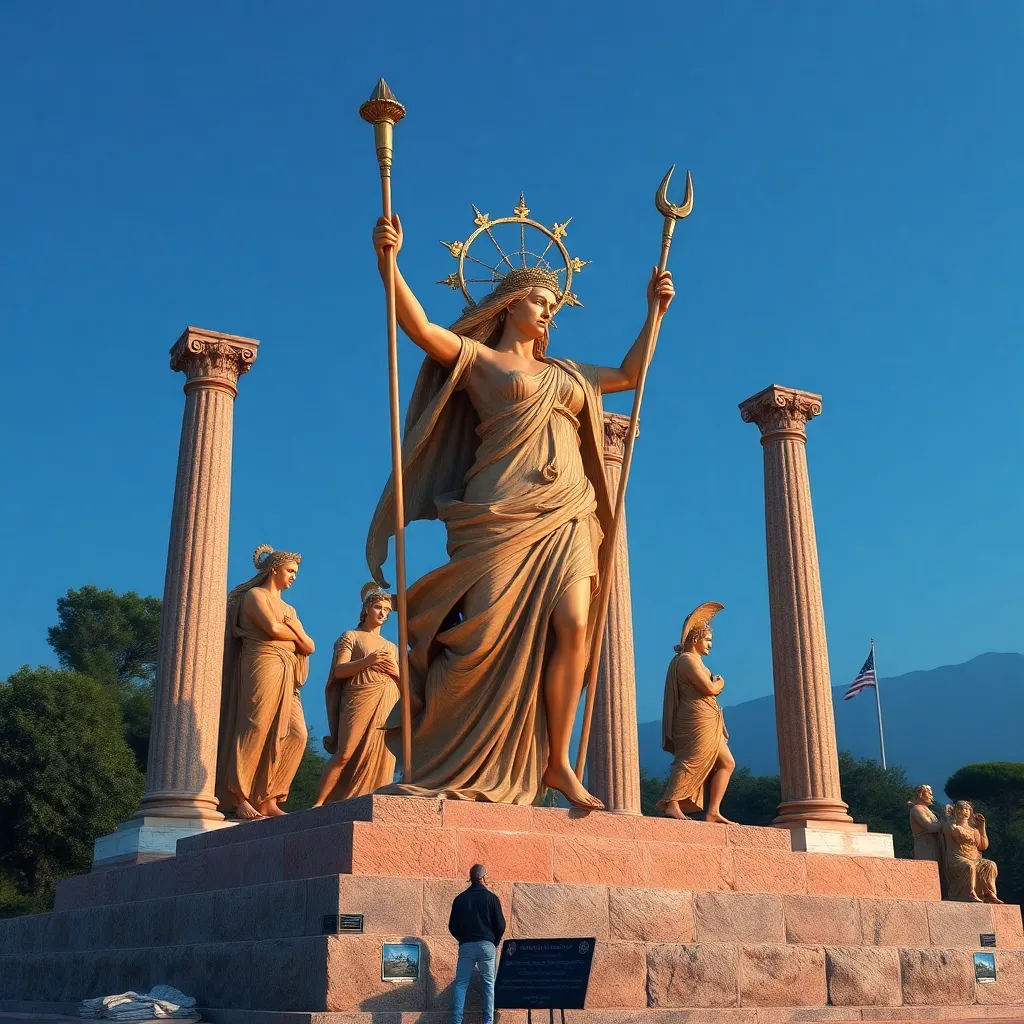The Festivals of Artemis: Cultural Significance and Practices
I. Introduction
Artemis, the Greek goddess of the hunt, wilderness, and childbirth, holds a significant place in ancient mythology. She is often depicted as a strong and independent figure, embodying the wild and untamed aspects of nature. Festivals dedicated to deities were a vital part of ancient Greek religion, serving as occasions for worship, community bonding, and cultural expression. This article aims to explore the cultural significance and practices associated with the festivals of Artemis, shedding light on their historical context and enduring legacy.
II. Historical Context of Artemis
The origins of Artemis can be traced back to pre-Hellenic times, where she was venerated as a fertility goddess. Over time, her character evolved, and she became associated with the moon, hunting, and protection of young women. Artemis is often linked with her twin brother Apollo, the god of the sun, music, and prophecy. Key myths associated with Artemis include her birth on the island of Delos, her role in avenging the death of her mother Leto, and her fierce protection of her own chastity and the sanctity of nature.
In Greek society, Artemis was revered not only as a goddess of the hunt but also as a protector of the vulnerable, such as children and women in labor. Her worship was widespread, with numerous temples and sanctuaries dedicated to her across the Greek world.
III. Major Festivals Dedicated to Artemis
Several key festivals were dedicated to Artemis, each with its unique characteristics and cultural significance:
- The Brauronia: Celebrated in Brauron, a sanctuary near Athens, this festival honored Artemis as the protector of young girls and involved rituals that marked their transition into womanhood.
- The Artemisia: This festival took place in Ephesus, where a grand temple dedicated to Artemis stood. It was celebrated with great pomp, featuring athletic contests and artistic performances.
- The Elaphebolia: This festival was marked by a hunt dedicated to Artemis, where participants would offer the first fruits of their hunting to the goddess.
These festivals were not only religious observances but also significant social events that brought communities together, reinforcing bonds among participants.
IV. Ritual Practices and Activities
During the festivals of Artemis, various rituals and activities were performed, showcasing the goddess’s importance in the lives of her devotees:
- Offerings and sacrifices: Worshippers would bring offerings of food, animals, and other valuable items to honor Artemis. Sacrifices often included deer, symbolizing the goddess’s connection to hunting.
- Processions and communal gatherings: Festivities included processions in which devotees would carry images of the goddess, sing hymns, and dance in honor of Artemis. These gatherings fostered a sense of community and shared devotion.
Female participants played a crucial role in these festivals, particularly in the Brauronia, where young girls would act as bearers of offerings, symbolizing their connection to the goddess. The gender dynamics of these festivals highlighted the importance of women in the worship of Artemis and in society at large.
V. The Cultural Significance of the Festivals
The festivals of Artemis served as a means of community bonding and social cohesion. They were occasions for people to come together, celebrate their shared beliefs, and reinforce their cultural identity. Through rituals and communal activities, participants reflected societal values such as respect for nature, the importance of family, and the transition from childhood to adulthood.
Moreover, the festivals influenced various aspects of art, literature, and theater in ancient Greece. They inspired countless works that celebrated the themes of nature, femininity, and the divine, thereby enriching Greek cultural heritage.
VI. Modern Interpretations and Revivals
In contemporary culture, the legacy of Artemis and her festivals persists in various forms. Many modern neopagan movements and feminist groups draw inspiration from the goddess, celebrating her as a symbol of empowerment and connection to nature. Festivals inspired by ancient practices, such as the Brauronia, have been revived in some communities, reflecting a growing interest in reconnecting with ancient traditions.
Furthermore, discussions surrounding gender and nature often invoke Artemis as a figure representing the balance between femininity and the natural world, emphasizing her relevance in today’s societal discourse.
VII. Comparative Analysis with Other Deity Festivals
The festivals of Artemis share similarities and differences with those dedicated to other Greek deities. For instance, festivals for Dionysus often involved revelry, wine, and ecstatic celebrations, while those for Athena focused on wisdom and warfare. However, like the festivals of Artemis, they served as essential gatherings for community bonding and cultural expression.
Insights into shared cultural practices reveal how ancient religions often intertwined, with overlapping themes of nature, fertility, and the divine. This comparative analysis allows for a deeper understanding of the religious landscape of ancient Greece.
VIII. Conclusion
The festivals of Artemis are a testament to her significance in ancient Greek culture, illustrating the deep connections between the goddess, her worshippers, and the natural world. These celebrations not only honored Artemis but also reinforced community ties and reflected societal values. The enduring legacy of these cultural practices continues to inspire modern interpretations and revivals, highlighting the importance of preserving ancient traditions in contemporary society.
As we explore the festivals of Artemis and their cultural significance, we gain insights into the values and beliefs of ancient Greece, as well as the enduring relevance of these traditions in today’s world.




